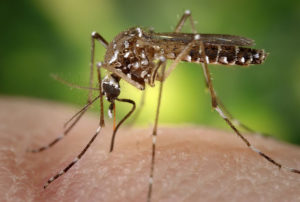
Everyone has the right to the highest attainable standard of physical and mental health, which also includes access to health services, sanitation, sufficient food, decent housing and a clean environment. Public health officials this year, along with BMC Public Health, convened in Denver, Colorado to discuss these rights at the American Public Health Association’s (APHA’s) Annual Meeting and Expo which took place from the 29th October to the 2nd November. This year’s theme, “Creating the Healthiest Nation: Ensuring the Right to Health,” brought to the forefront a diverse range of public health issues, including the Zika epidemic, suicide and prescription drug overdose which gained particular attention this year.
Public health approach to suicide prevention
Opening session speakers included Colorado Governor John Hickenlooper who discussed sexual and reproductive health care, legal marijuana, drug abuse and suicide, which is one of the major challenges facing Colorado considering that it has the seventh highest suicide rate in the nation.

Alex Crosby, the Branch Chief of the Surveillance Branch of the Division of Violence Prevention in the National Center for Injury Prevention and Control at the CDC, gave an intriguing talk about the CDC’s unique role in suicide prevention. To address the 10th leading cause of death in the United States, the CDC looks at promoting individual, family and community connectedness in order to prevent suicidal behavior. It has also helped produce a common language to facilitate identifying and monitoring such behavior.
A new CDC report has shown that overall suicide rates in middle aged men aged 45-64 has increased by 43 percent in the last 15 years compared to overall suicide rates which rose 24 percent. There doesn’t seem to be one cause that can explain this spike but there is likely a convergence of multiple factors within middle aged men that makes them especially vulnerable. The CDC have made it a priority to fund programs looking into suicide behavior in this group further.
Unfortunately, the stigma and taboo surrounding suicide means that funding is affected. Jarrod Hindman, Director of the Suicide Prevention Center in Denver, explained that, in the last 10 years, federal funding has been invested in research on leading causes of death such as HIV/AIDS, heart disease, and prostate cancer. Major progress has led to decreased mortality rates and so it’s time the same is done with suicide where death rates are on the rise.
Prescription drug overdose

In his opening speech, Governor John Hickenlooper also discussed drug abuse and proudly announced that Colorado had expanded access to naloxone, which reverses the effects of an opioid overdose, noting that he learned how to administer the medicine and carries a dose of it in his state trooper’s vehicle in case he encounters someone in need.
Availability of prescribed drugs, which is the second most abused type of drug in adolescents following marijuana, can be an important determinant of suicidal behavior. Opioids, CNS depressants for anxiety and sleep disorders and stimulants often prescribed for ADHD are the classes most commonly abused. An astonishing 2.4 million Americans have used prescription drugs non medically for the first time within the last year and an estimated 52 million people have used these drugs for non medical reasons at least once in their lifetime. Mian Hossein, a Professor at Morgan State University, discussed the mental health consequences of nonmedical prescription drug use among youths aged 12-17 in the United States. His research, which uses data from 176,200 youths over a period of 10 years documents a relationship between the use of nonmedical prescription drugs and major depressive episodes in this group.
A public health emergency – the Zika virus
As concerns about the spread of the Zika virus continue to grow, APHA is one of 11 national organizations funded by the Centers for Disease Control and Prevention to support and disseminate evidence based approaches for preventing and controlling the spread of the virus.

A special session organized at the conference discussed staging a multisectoral and epidemiological approach to the emergent threat of the virus. Lyle Petersen, Director of the Division of Vector-Borne Diseases in the National Center for Emerging and Zoonotic Infectious Diseases (NCEZID), spoke about the virus’ presence in the United States. He explained that, as there was no previous experience with the virus in the western hemisphere, diseases such as Dengue Fever and Chikungunya had to be looked at to give an idea of how the virus might spread.
Zika prevention strategies currently include vector control, warnings against travel for pregnant women, blood donor screening and providing access to contraceptives. However, there is still a lot which is not known regarding other possible modes of transmission, what the duration and magnitude of risk is in sexual transmission of the virus as well as what the preconception risk is.
APHA 2017
We left APHA this year with an encouraging message from Governor John Hickenlooper to the thousands of public health practitioners attending this year: “You guys are gonna save the world.”
We can’t wait to attend next year’s conference in Atlanta where ongoing efforts will be recognized and shared with the goal of achieving healthier communities and health equity globally.
Comments